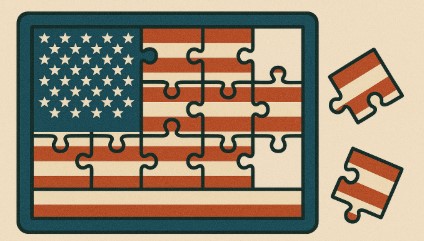From the outside, the US can look like a wide-open market: large, affluent, and English-speaking. But many international brands have learned the hard way that what works at home doesn’t always land with American customers. Even globally sophisticated companies have stumbled by overlooking cultural cues, customer expectations, or just how different the US really is.
Some examples:
- When UK supermarket giant Tesco launched Fresh & Easy in the Western US, it assumed American shoppers would embrace smaller stores, self-checkout, and ready-made meals, just as they had in Britain. But they didn’t. Americans tend to shop less frequently and buy in bulk. Self-checkout kiosks (a core feature of the concept) felt impersonal. And the grab-and-go prepared foods? Not what many families were looking for in a weekly grocery haul. After five years and nearly $2 billion in losses, Tesco pulled out of the US entirely.
- Danish pharma company Novo Nordisk saw enormous opportunity in launching its weight-loss drug Wegovy in the US But it didn’t fully anticipate just how fragmented and cost-sensitive the American healthcare system is. The marketing was strong, but the product wasn’t widely available. Supply was limited. Insurance coverage was patchy. And out-of-pocket costs could exceed $1,300/month. The result was frustration from patients and physicians, negative press, and a loss of ground to US competitor Eli Lilly.
What went wrong? In both cases, the companies entered the US with strong brands, solid products, and proven models. What they lacked was a deep understanding of American customers.
Here are just a few misconceptions that frequently trip up international companies:
- “The US is one market.” In reality, it’s a patchwork of regional, cultural, and socioeconomic submarkets.
- “What works in Europe will work in the US” American expectations around convenience, customer service, and speed are often much higher.
- “Subtle, nuanced messaging will be appreciated.” US marketing norms favor directness, boldness, and clarity.
- “If we build it, they will come.” Without understanding US shopping behaviors or systems (like insurance or retail logistics), even great products can falter.
These are the kinds of missteps that deeper qualitative research can help prevent. To understand American customers – not just what they do, but why – foreign companies need research that reveals cultural nuance.
Here are some research approaches that can help:
- In-home or remote ethnography. Observe daily routines and behaviors. This would have revealed that “quick convenience meals” don’t mean the same thing to US families as to UK shoppers. This can be done in-person or using an online platform such as Field Notes (https://www.fieldnotes.space/) or a combination of the two.
- Storytelling and projective interviews. Ask people to talk about their earliest memories related to your product or service, their best or worst experiences, and their ideal experience. This uncovers the values and emotional drivers behind their decisions.
And don’t forget to test assumptions across American submarkets (urban vs. suburban, East vs. West Coast). What resonates in Seattle may not play the same in Houston.
It’s easy to underestimate how culturally specific customer expectations can be, especially in a country that looks, on the surface, familiar. But the gap between looks familiar and feels right is where brand traction is won or lost. That’s where qualitative research makes all the difference. If you’re entering or struggling to grow in the US market, we can help. Contact me at 818-588-6050 or jay@bureauwest.com and let’s discuss!
Sincerely,
Jay Zaltzman (he/him), President
Bureau West: Market Research ∙ Consulting ∙ Coaching
http://bureauwest.com/ jay@bureauwest.com +1-818-588-6050
Sources: “How Novo Nordisk misread the US market for its weight loss sensation,” Reuters, July 1, 2025; “Tesco will pull out of U.S., sell Fresh & Easy,” USA Today, April 17, 2013
